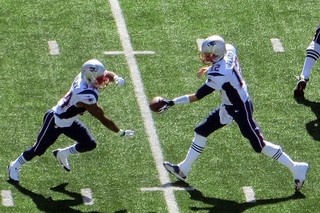31 January 2014. Biomedical engineers at Virginia Tech in Blacksburg found a helmet design that better absorbs head impact can reduce the rate of concussions among college football players. The team led by Virginia Tech research professor Steve Rowson, with colleagues from seven other institutions, published its findings online today in Journal of Neurosurgery.
Recent revelations of an association between concussions and and long-term degenerative brain conditions, sometimes with tragic outcomes, sparked a debate among players and coaches at all levels about ways to reduce concussions. Suggestions for controlling concussions include better training in safer tackling techniques and rewriting of rules to limit the kind of collisions that can cause brain trauma.
One question still not resolved, however, is the possible role of helmet design in the occurrence of concussions. Rowson and colleagues tested this factor with a retrospective study of concussions occurring among football players from Division 1 schools — those with the highest level of play and generally the best athletes — wearing two models of helmet made by Riddell, a leading manufacturer: VSR4 introduced in the 1980s, and Revolution introduced in 2002. The authors note that the Revolution has a larger shell offset, i.e. the amount of space between the helmet shell and player’s skull, and 40 percent thicker foam padding than the VSR4.
The researchers gathered data from records of 1,833 football players from 2005 to 2010 who wore one of the two models of helmet at eight colleges: Virginia Tech, University of North Carolina, University of Oklahoma, Dartmouth College, Brown University, University of Minnesota, Indiana University, and University of Illinois. The players practiced and competed with helmet-mounted accelerometers that recorded the severity, frequency, and location of head impacts, from which the researchers drew much of their data.
Rowson and colleagues also collected reports of concussions, defined as alterations in mental state as a result of blow to the head, and diagnosed by either the team’s trainer or physician. The authors acknowledge that concussions could be under-reported, with data in other studies indicating concussion rates possibly 2 to 10 times higher than reported.
The findings show the players over this period in the study recorded 1,281,444 head impacts, and reported 64 concussions. Players wearing the VSR4 helmets had 322,725 head impacts, and suffered 27 concussions. Players in the Revolution model helmet had 958,719 head impacts, and reported 37 concussions.
Among all players, 3.34 percent suffered concussions, with a higher rate of occurrence (4.47%) among VSR4 wearers than players wearing the Revolution model (2.82%). The data show players wearing the VSR4 helmets experienced 8.37 concussions per 100,000 head impacts, while the those wearing the Revolution model had 3.86 concussions per 100,000 impacts. The researchers attribute at least some of this difference to design of the helmets, where the authors say the Revolution model does a better job at absorbing and modulating the energy transfer from a collision impact to the head.
The quantity of data made it possible to statistically control for the number of head impacts, so the researchers were able to compare concussion rates among players in similar positions and styles of play. “This is the first study to control for the number of times players hit their heads when comparing helmet types,” says Rowson in a university statement.
The authors note that better helmets will not eliminate concussions in a sport like football. Nonetheless, says Rowson, “Helmets that better lower head acceleration reduce concussion risk.”
Read more:
- Balance Device, Software Devised to Measure Concussion
- Computer Model Identifies Concussion-Producing Conditions
- Stanford Using Sensor-Packed Mouthpiece to Study Concussions
- Grant Awarded for Study of Blood Test to Spot Concussions
* * *


 RSS - Posts
RSS - Posts